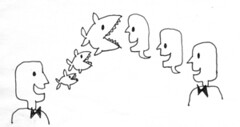Three Things to do when dealing with Conflict between your Assistant Coaches
Dealing with conflict within the team and especially between staff members like Assistant Coaches can make or break a team. So you have been lucky enough to be placed into the top job of being a Head Coach. You have a good staff around you who are ready and able to help you achieve all your goals for the team you are working with. But then trouble starts…
Conflict in a team environment can come from a number of different directions and it is not always easy to anticipate or to see before it is right there in front of you. Good leaders, managers and coaches are those who don’t necessarily have any conflict in their teams, but they do have the skills to deal with that conflict and change it from a negative into a positive.
In most situations conflict can be examined and worked upon to reach an amicable solution. Within this process, provided it is managed correctly, the procedures undertaken have an effect of bringing those involved in the conflict together and sharing thoughts which is one of the traits of building trust.
So as a Head Coach what should you do?

Initially do not take sides! You must remember that everyone you speak to will have a different version of the truth. This means they are telling the story as it happened but filtered through their own bias, interpretations and communication style. This is the same affect you see on a basketball court where a coach gives a direction to a new group of athletes and half perform the task accurately and the rest seem to do something different. It is only through experience that often athletes and staff start to become in tune and understand the nuances of how a coach speaks, directs and what is implied by their directions.
- Make sure you get all versions of the story initially. Sometimes the best way to do this is to meet with all parties involved separately before bringing them together. Also by meeting everyone individually you will be able to ask more specific and direction questions which in a group environment might seem confronting. Through this process you should be able to identify the cause of the conflict and the underlying issue.
- Bring everyone together to find an amicable solution. Select an environment which is quite and free of disruptions so everyone can speak and be heard. As the Head Coach you will be the mediator. You should lead the conversation from start to finish. This will help the atmosphere of the meeting seem less one sided and advantageous to one Assistant Coach or another. Start by highlighting the cause and then move quickly to a solution. The solution to the conflict needs to be the focus of the meeting. As a final thought remember that as adults we do have the right not to always accept people and their mannerisms unconditionally, but it should be expected they we can act with respect and tolerance.
- Follow-up on any consensus reached. Just like growing a garden, regular maintenance is always advised. You should look to do the same in mending and strengthening relationships. Touching base with the individuals involved demonstrate that you empathise with the situation but also allows you to drive how the resolutions discussed in the meeting and give an opportunity to re-emphasis these.
Remember always that conflict can be a destructive force or it can be something that brings people together. Try to make it the latter. All high performing teams experience conflict in one way or another and in most cases it helps to underpin characteristics like honesty, communication, respect and empathy amongst team members.


